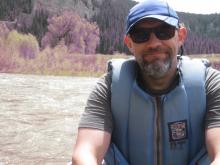Welcome to the Virtual Base Camp, the starting point for your exploration of the polar regions with PolarTREC teachers and researchers!
2017 Expedition Timeline
Expeditions
Operation IceBridge 2017
What Are They Doing?

Expedition Map
Arctic Ground Squirrel Studies 2017
What Are They Doing?
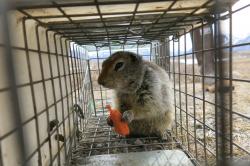
Predicting how species might alter their annual timing in response to rapid environmental change, including climate change, is constrained by insufficient knowledge of the endogenous mechanisms animals use to keep time, the cues used to adjust timing, and the extent to which programmed seasonal cycles are physiologically plastic. This study will investigate the mechanisms that underlie plasticity in the seasonal induction of the neuroendocrine signals that trigger the termination of hibernation and onset of reproduction in ground squirrels.
Expedition Map
Dynamic Observations of the Microstructural Evolution of Firn
What Are They Doing?

We will drill an 80-meter firn core at Summit, Greenland and transport it to Dartmouth University. After the field expedition, Steve will work with the team at the university, where we will perform experiments to observe changes based on temperature and stress (due to depth and load). In addition to observing the microstructure as a whole, we can follow the evolution of ice crystals to observe bond formation and bond-breaking under load in detail, as undertaken in some prior studies on snow.
Our project will aid in the understanding of firn and ice microstructure evolution in polar ice sheets. This will aid in understanding ice flow and interpreting paleoclimate reconstruction from ice cores.
Expedition Map
Jellyfish in the Bering Sea
What Are They Doing?
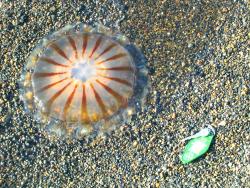
This project will estimate the age structure and age-specific abundances of the predominant jellyfish in the Bering Sea, Chrysaora melanaster, in order to understand how their population size changes with time. The ultimate goal is to estimate the reproductive capacity and success of this jellyfish in relation to climate variability and to investigate the potential for jellyfish population increases to become a recurring pattern in the Bering Sea under future climate scenarios. In the Bering Sea ecosystem, key questions are whether increases in jellyfish abundance are a recurring phenomenon under climate change and fishing pressure and how these population increases affect ecosystem structure.
Expedition Map
Research Opportunities in the Arctic for Minorities
What Are They Doing?
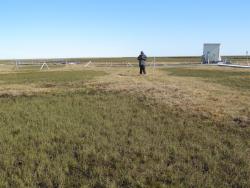
UTEP is one of the nation’s leading Hispanic Serving Institutions and is situated in a region where 80% of the population is Hispanic. This program aims to make a significant impact on the polar student demographic by not only offering direct training, but also familiarizing them with national challenges in minority education and advancement.
Expedition Map
Arctic Glacial Lakes
What Are They Doing?
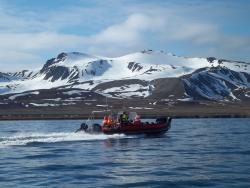
In order to improve our paleoclimate reconstructions of these processes, a crucial step is the development of a system model that describes the hydrology, sediment-flux, and sedimentation in glacial lake systems. A main goal of this project is to establish such a model, and to apply it to three glaciated watersheds that span a gradient from the sub-Arctic to high Arctic. The three lakes included in the study are Eklutna Lake (a sub-arctic lake near Anchorage, Alaska), Lake Peters (in the Arctic National Wildlife Refuge, Alaska), and Lake Linné (Svalbard, in the high Arctic). From 2015-2017, field seasons have focused on Lake Peters, where weather stations, sediment traps, ablation stakes, and various other climate monitoring has continued for a total of three years, and sediment cores have been collected to reconstruct paleoenvironmental changes.
Expedition Map
Upwelling and Ecology in the Beaufort Sea
What Are They Doing?
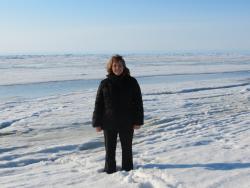
The team plans to explore and identify the mechanisms linking broad-scale atmospheric forcing, ocean physical response, prey-base condition and distribution, upper trophic level animal aggregations, and climate change along the Beaufort Shelf break. The team's overarching hypothesis is that atmospherically-forced (wind-induced) upwelling along this shelf break leads to enhanced feeding opportunities for intermediate links in the pelagic ecosystem (zooplankton, forage fish) that in turn sustain the exploitation of this environment by animals such as beluga whales, seabirds, and seals. Support for the teacher is provided through the research project funding.
Expedition Map
CO2 and pH Studies of the Arctic Ocean
What Are They Doing?
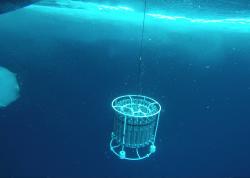
The Arctic Ocean is changing rapidly. The changes have important implications for global carbon cycling, global fisheries and ocean acidification. There are many intertwining processes, however, that make future predictions difficult. This project will make important contributions to our understanding of the global carbon cycle and ocean acidification by providing Arctic scientists with high quality carbon cycle data to use in model development and as a baseline for comparison with future carbon parameter measurements.
Expedition Map
Seasonal Sea Ice Production in the Ross Sea
What Are They Doing?
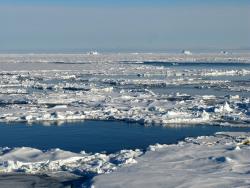
More information about the PIPERS project and a cruise blog can be found here.

Expedition Map
Antarctic Automatic Weather Stations
What Are They Doing?
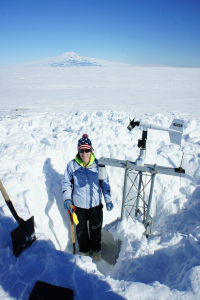
The Antarctic Automatic Weather Station network provides a greater understanding of the surface meteorology and climatology throughout the continent of Antarctica. The AWS network spans the Ross Ice Shelf, Ross Island, West Antarctica, East Antarctica, and the South Pole. Since some of the AWS have been working for over 30 years, we can begin to understand the climate over many regions of Antarctica.
Expedition Map
IceCube and the Askaryan Radio Array
What Are They Doing?
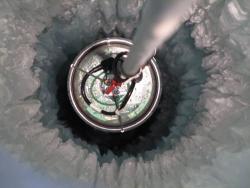
The fully built Askaryan Radio Array (ARA) project will have an effective volume 100 times larger than IceCube. The tradeoff is that it will only be capable of observing radio waves from interactions with extremely high energy neutrinos, a million times more energetic than the neutrinos produced by cosmic rays in the atmosphere. IceCube studies those lower energy atmospheric neutrinos, 100,000 per year, to learn more about neutrino properties, including their ability to transform from one type to another.
The universe is a huge and mysterious place that is largely unexplored. New technologies and creative approaches allow us to see things that aren’t directly viewable. Neutrinos will reveal new information about the Universe that can’t be recorded with optical or even more exotic telescopes that measure other types of light, like radio waves, microwaves, x-rays, and gamma rays. Many different roles and talents are needed to develop new approaches—technicians to make and operate new machines, computer experts to store and retrieve data, and scientists to define goals, identify promising projects, and guide students. IceCube and ARA are discovery instruments that will lead to a greater understanding of the cosmos and will hopefully uncover new mysteries for scientists to solve.








